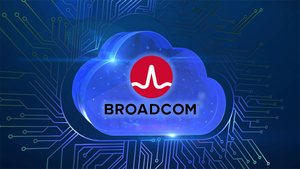
The digital asset sector witnessed a notable tremor last week as Circle Internet Group (NYSE: CRCL), the issuer of the popular USD Coin (USDC), experienced a significant 12% dip in its weekly share price. This sharp decline, observed during the last week of September 2025, signals growing investor apprehension fueled by a confluence of evolving market dynamics, intensifying competition, and pivotal regulatory shifts within the stablecoin ecosystem. The immediate implications point to a challenging period for Circle as it navigates a rapidly transforming financial environment where traditional banking institutions are increasingly exploring their own tokenized deposit solutions, potentially sidelining third-party stablecoins.
This downturn for Circle not only reflects company-specific pressures but also underscores a broader recalibration within the stablecoin market. As regulatory frameworks solidify and new forms of digital money emerge, the competitive landscape for stablecoin providers like Circle is becoming increasingly complex. The market's reaction suggests a re-evaluation of stablecoin integration into traditional finance and highlights the urgent need for innovation and strategic adaptation from key players to maintain relevance and growth in the years to come.
Detailed Coverage: Unpacking Circle's Recent Volatility
Circle Internet Group's 12% share price slump in the final week of September 2025 was triggered by a multifaceted array of factors, painting a picture of a company grappling with both internal and external pressures. A primary catalyst was the announcement of a pilot program by major U.K. banks to launch blockchain-based tokenized deposits. This move, reportedly favored by Bank of England Governor Andrew Bailey for its efficiency and security, suggests a preference for native tokenized solutions within traditional finance over existing stablecoin alternatives like USDC, casting a shadow over Circle's long-term strategy for bridging crypto and conventional banking.
Adding to the investor unease were reports of significant insider selling in the preceding months, with directors offloading over 832,000 shares in August. This, coupled with analyst concerns regarding Circle's valuation—where substantial growth appeared already priced in—contributed to a cautious sentiment. Financial metrics, including a negative return on equity and operating margin, alongside a Price-to-Sales (PS) ratio nearing a one-year low, further underscored underlying financial pressures that may be hindering sustainable profitability despite robust revenue growth.
The competitive landscape also intensified, with new offerings such as Hyperliquid’s USDH stablecoin emerging. Unlike USDC, which is restricted by U.S. law from offering interest, USDH provides yield to its holders, posing a direct threat to USDC's market share and Circle's revenue derived from Treasury yield. Hyperliquid's stated intention to convert billions of dollars in USDC holdings to USDH highlights the tangible risk of liquidity migration. Furthermore, several research firms adjusted their ratings and price targets for Circle, with some downgrading the stock to "sell" and lowering price objectives, reflecting a mixed to negative outlook from the analyst community. Broader macroeconomic factors, such as falling interest rate expectations, also played a role, as they can directly impact Circle's interest income from its reserves.
Market Movers: Winners and Losers in the Stablecoin Shake-up
The evolving landscape of digital money, marked by Circle's recent downturn and the ascent of tokenized deposits, is creating distinct winners and losers across the financial and cryptocurrency sectors. At the forefront of those facing headwinds is Circle Internet Group (NYSE: CRCL) itself. Despite a successful IPO in June 2025, where shares initially surged, the company's stock has plummeted by 40% from its June price of $198.62 to $127.13 by September 2025. This decline validates earlier concerns about overvaluation and is exacerbated by a dilutive public offering, analyst downgrades, and a swing from positive to negative EBITDA and EPS. The increasing shift towards bank-issued tokenized deposits directly threatens USDC's market share, particularly among institutional clients who may favor the regulatory clarity, deposit insurance, and interest-earning potential of bank-backed solutions. A significant portion of Circle's revenue is derived from interest on its USDC reserves, making any decline in USDC usage a direct hit to its profitability.
Coinbase Global (NASDAQ: COIN), a major partner of Circle and a platform where USDC is prominent, could also face indirect challenges. While Coinbase holds an equity stake in Circle, a significant downturn in USDC's market share or the broader stablecoin market could impact Coinbase's transaction volumes and related revenue streams. As traditional financial institutions enter the digital asset space with their own tokenized deposit offerings, they may also draw institutional activity away from crypto-native platforms like Coinbase, further intensifying competition for digital asset service providers.
Conversely, established financial institutions and payment networks are strategically positioning themselves to be significant beneficiaries of the tokenized deposit trend. JPMorgan Chase & Co. (NYSE: JPM) stands out as a clear winner, having launched a pilot project for its "JPMD" token. This deposit product, a digital representation of the bank's dollar deposits for institutional clients, is designed for compatibility with existing financial infrastructure and is notably being issued on Coinbase's Base blockchain. This groundbreaking move positions JPMorgan to offer 24/7 settlement capabilities and potential interest payments, presenting a "superior alternative" to stablecoins for its clients.
Similarly, Citigroup Inc. (NYSE: C) is making strides with its "Citi Token Services for Cash" and "Citi Token Services for Trade," leveraging distributed ledger technology (DLT) to streamline cash management and trade finance globally on a 24/7 basis. Payment giants are also capitalizing on this shift. Mastercard Inc. (NYSE: MA) has developed its "Multi-Token Network" (MTN) as a testbed for tokenized bank deposits, aiming to provide secure, scalable, and interoperable transactions within digital asset ecosystems and enable 24/7 real-time interbank settlement. Not to be outdone, Visa Inc. (NYSE: V) introduced its Visa Tokenized Asset Platform (VTAP) to help banks issue and manage fiat-backed tokens, simplifying the integration of blockchain technologies for its vast network of financial institutions. Furthermore, a consortium of major UK banks, including Barclays (LON: BARC), HSBC Holdings (LON: HSBA), Lloyds Banking Group (LON: LLOY), NatWest Group (LON: NWG), and Santander (NYSE: SAN), are participating in a pilot for tokenized sterling deposits, signaling a broad embrace of this technology by traditional finance. These institutions are poised to gain by offering regulated, efficient, and integrated digital money solutions, potentially shifting a substantial portion of the digital currency market from fintech-issued stablecoins to bank-issued digital liabilities.
Broader Horizons: The Wider Significance for Digital Finance
Circle's recent share price volatility and the ascendance of tokenized deposits are not isolated events but rather indicative of profound shifts within the broader digital finance industry. This dynamic interplay carries significant implications for competitors, partners, and the regulatory landscape, while also drawing intriguing parallels to historical financial innovations. The 11.9% weekly dip in Circle's stock, alongside a 15% fall on a single day, is a stark reflection of the market's re-evaluation of stablecoins in light of the growing preference for blockchain-based tokenized deposits. This preference, coupled with an "Underweight" rating from JPMorgan Chase & Co. (NYSE: JPM) due to an unjustifiably high valuation, negative profitability metrics despite strong revenue growth, and significant insider selling, collectively paints a picture of a sector undergoing fundamental change. The U.S. GENIUS Act, a federal regulation for USD-backed stablecoins, further complicates matters by restricting issuers from offering interest to depositors, directly impacting Circle's growth strategy and revenue model.
The rise of tokenized deposits represents a pivotal industry trend, signaling a new era for digital money. These digital representations of traditional customer deposits, held at regulated commercial banks and recorded on a blockchain, function as a new payment rail. They offer 24/7 operations, immutable record-keeping, faster settlement, and enhanced efficiency compared to legacy systems like ACH or SWIFT. Crucially, unlike stablecoins, tokenized deposits are traditional bank liabilities, often insured by the FDIC and governed by existing banking regulations. This compliance with established frameworks makes them an attractive and more straightforward path for regulated financial institutions to engage with blockchain technology, aligning with the World Economic Forum's projection that tokenization will account for 10% of global GDP by 2027. Major players like Citigroup Inc. (NYSE: C), JPMorgan Chase & Co. (NYSE: JPM), and Visa Inc. (NYSE: V) are actively involved in proof-of-concept initiatives, further solidifying this trend.
The ripple effects are far-reaching. For stablecoin competitors like Tether, the shift towards tokenized deposits, particularly with regulatory backing, could erode market share. While stablecoins currently dominate crypto markets, regulated tokenized deposits offer similar benefits with the added stability and trust inherent in existing banking frameworks. New stablecoin entrants, such as Hyperliquid's USDH, which offers yield, further intensify the competitive pressure on established players, especially given regulatory restrictions on interest on traditional stablecoins. For traditional banks, tokenized deposits offer a pathway to modernize payment infrastructure, enhance efficiency in areas like cross-border payments, and potentially unlock new revenue streams through digital asset custody. However, this innovation also poses a threat to traditional fee incomes, as near-instant, low-cost peer-to-peer transfers could compete with legacy payment systems. Partnerships, such as those Circle has forged with entities like Binance, OKX, Corpay, FIS (NYSE: FIS), and Fiserv (NYSE: FI), to integrate USDC into various applications, may need re-evaluation as the preference for tokenized deposits grows.
From a regulatory standpoint, there is a clear preference among bodies outside the U.S., including the Bank of England, for tokenized bank deposits over stablecoins. This preference stems from the fact that tokenized deposits retain the protections and backing of traditional deposits, such as deposit insurance, capital requirements, and compliance with AML/KYC rules, preserving the "singleness of money" principle. Activities involving tokenized deposits are often excluded from new crypto-asset regulations like the EU's MiCAR because they are already governed under traditional banking and deposit frameworks. Stablecoins, conversely, face increasing scrutiny due to concerns about run risk, illicit finance, consumer confusion, and their potential impact on financial stability. The U.S. Senate's GENIUS Act, while establishing a framework for stablecoins, mandates full reserve backing and monthly audits, reflecting ongoing efforts to mitigate risks. Historically, the debate over private digital currencies echoes periods in U.S. history when private banks issued their own banknotes, highlighting the recurring need for government intervention to ensure a stable and well-functioning monetary system. The competition between different forms of digital money for cross-border payments also mirrors past innovations aimed at increasing liquidity, fractionalization of assets, and expanding capital markets, with tokenization being a modern continuation of this trend.
The Road Ahead: What's Next for Circle and Stablecoins
As of late September 2025, Circle Internet Group (NYSE: CRCL) stands at a critical juncture, navigating a rapidly evolving stablecoin market characterized by both immense opportunity and formidable challenges. In the short term, Circle is poised to capitalize on its recent Initial Public Offering (IPO) in June 2025, which saw it list on the New York Stock Exchange under the ticker CRCL, raising approximately $1.1 billion. This successful public debut, coupled with the passage of the U.S. "Guiding and Establishing National Innovation for U.S. Stablecoins" (GENIUS) Act in July 2025, provides a much-needed federal regulatory framework. This clarity is expected to instill greater confidence in USDC, accelerating its adoption by households, businesses, and financial institutions. Circle's immediate focus will likely involve expanding USDC's utility and adoption, growing its Circle Payments Network (CPN) for institutional stablecoin payments, and further developing its Arc blockchain and Circle Gateway for enhanced liquidity and transaction speed. However, it must also contend with the fierce competition from Tether (USDT) and new entrants like PayPal's (NASDAQ: PYPL) PYUSD.
Looking further ahead, the long-term possibilities for Circle and the stablecoin market point towards deeper integration into global finance. Stablecoins are already revolutionizing cross-border payments, with projections suggesting their usage could reach $2 trillion by 2028. Circle, with its CPN and strategic partnerships, is well-positioned to capture a significant share of this market. Institutional adoption is rapidly increasing, with stablecoins expected to account for 5% to 10% of global payments by 2030, representing trillions in value. Circle's "compliance-first" approach for USDC gives it a distinct advantage in this institutional push. The company's product roadmap also includes enterprise-grade APIs for programmable payments, aiming to build Web3's financial infrastructure layer and generate substantial recurring revenue from programmable money applications.
To maintain its leadership, Circle will need to execute several strategic pivots and adaptations. One significant consideration is balancing the immutability inherent in blockchain with the demands of traditional finance by exploring reversible USDC transactions, a move that could boost adoption but challenge core blockchain principles. Diversifying revenue streams beyond reserve income, potentially through its Arc blockchain's "gas" fees and platform services, will be crucial, especially if interest rates fall. Expanding beyond USD-pegged stablecoins to include offerings like EURC and other fiat-backed stablecoins will tap into new regional markets. Enhanced interoperability through its Cross-Chain Transfer Protocol (CCTP) and multi-chain expansion for USDC and EURC will be vital for seamless value transfer across the fragmented blockchain ecosystem. The market will remain intensely competitive, a "zero-sum game" where innovation and strategic partnerships are key to fending off rivals and new entrants.
Potential scenarios range from "Regulated Dominance," where USDC's compliance advantage allows it to gain significant market share and deepen partnerships with traditional finance, to a "Multi-Stablecoin Ecosystem," where the market becomes more fragmented with different stablecoins specializing in certain use cases. A less likely "Regulatory Bottleneck" could stifle innovation, while a "Technological Disruption" from new digital assets or CBDCs could necessitate a major strategic pivot for Circle. Ultimately, Circle's future hinges on its ability to innovate, navigate competition, and adapt to evolving regulatory landscapes and technological advancements, all while leveraging its "compliance-first" brand identity to foster trust and widespread adoption.
Final Thoughts: Navigating the Evolving Digital Asset Landscape
Circle Internet Group's (NYSE: CRCL) recent share price volatility, including its 12% weekly dip, serves as a poignant reminder of the inherent dynamism and evolving sentiment within the digital asset space. While immediate concerns stemming from the rise of tokenized deposits by traditional banks and the impact of falling interest rates on Circle's revenue model have pressured its stock, the underlying strength of its core business—issuing USDC—remains robust. The increasing global adoption of USDC, coupled with the supportive regulatory environment fostered by the U.S. GENIUS Act, underscores the substantial growth trajectory that continues to define the company. Circle's proactive measures to forge new strategic partnerships and diversify its revenue streams through innovative initiatives like the Arc blockchain are critical for ensuring long-term stability and sustained growth in this competitive landscape.
Moving forward, the digital finance market is undoubtedly at an inflection point. The stablecoin sector's maturation, evidenced by burgeoning market capitalizations and growing regulatory clarity, is effectively bridging the gap between traditional finance and the decentralized economy. However, the emergence of "tokenized deposits" directly from established financial institutions represents a significant, albeit nascent, competitive challenge to stablecoins for specific institutional use cases. The trajectory of global interest rates will continue to play a pivotal role in Circle's profitability, given its reliance on yield from its reserve assets. Ultimately, sustained institutional acceptance and expanded utility across payments, decentralized finance (DeFi), and cross-border transactions are expected to be the primary drivers of continued growth in the broader stablecoin ecosystem.
Circle Internet Group is more than just a stablecoin issuer; it is a foundational layer in the rapidly evolving digital financial infrastructure. Its unwavering commitment to regulatory compliance, particularly accentuated by the passage of the GENIUS Act, effectively differentiates USDC in a crowded market and builds the trust essential for widespread adoption. The company's ability to skillfully navigate the inherent tension between traditional finance's tokenization efforts and the organic growth of stablecoins will be paramount in shaping the future of money movement and digital value exchange. Should Circle successfully diversify its revenue streams and continue to expand USDC's utility and market share, its lasting impact could be profound, significantly accelerating global financial inclusion and enhancing efficiency across various sectors.
For investors, a balanced perspective is crucial, acknowledging both the recent volatility and the compelling long-term growth drivers. Key areas to monitor in the coming months include consistent growth in USDC circulation and its integration into diverse financial applications. Keep a close eye on global interest rate trends, as they directly impact Circle's interest income. Further regulatory pronouncements, especially from major financial hubs, could influence Circle's operational landscape and competitive positioning. Assess the adoption and revenue generation from the newly launched Arc blockchain, a key diversification strategy. Finally, closely monitor the strategies of competitors, including other stablecoin issuers and the progress of tokenization initiatives by traditional financial institutions. Despite the recent dip, Circle's strategic positioning and the underlying growth in the stablecoin market suggest a compelling long-term narrative, but prudence and a keen eye on the evolving digital finance landscape will be essential.
This content is intended for informational purposes only and is not financial advice





